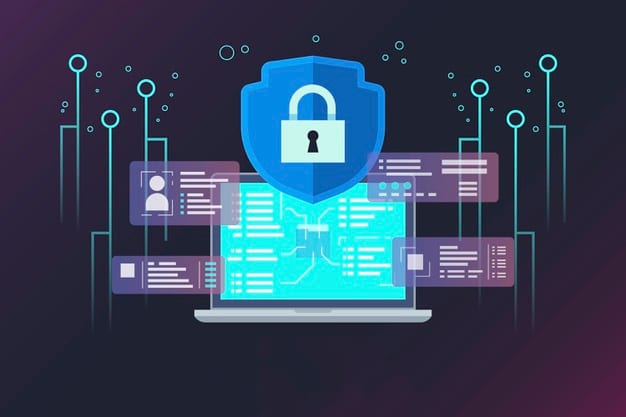
For businesses that rely heavily on technology and the internet, cybersecurity is a significant part of operations. According to a survey record (National Computer Security Survey), about 86% of businesses throughout the globe experience different kinds of IT security threats to their systems and applications. IT security threats are always detrimental to your business’s operations and sensitive data. And unfortunately, even as you heighten security measures for your data and systems, cybercriminals are continuing to find new ways of accessing your sensitive business data and carrying out cyberattacks. So, adopting cybersecurity measures isn’t enough; regular security assessments ensure they remain effective.
An IT security assessment analyzes infrastructure and networks, identifies vulnerabilities, and recommends solutions. Here are the reasons that make regular IT security assessments essential for your business.
1. Ensure Data Security
The first concern that comes to mind when hearing about a cyber-attack is the security of sensitive business data. Therefore, organizations implement safeguards to protect crucial information. However, simply implementing security measures is not enough. Instead, regular testing is essential to ensure these measures effectively protect data from all potential attack points.
Cyber threats like malware and ransomware can disrupt operations and steal your data. Regular IT security assessments will help you avoid such disasters from happening and keep your business safe. A thorough IT security assessment examines your business network and analyzes the outcome to discover whether any security gaps are there.
Along with vulnerability assessment, the IT security experts also helps you find ways to solve the problems. They work to block any loophole that an attacker might exploit.
Security risk assessments include penetration testing, database security checks, and web app testing. All of them can help to identify the loose ends of your implemented security measures.
2. Ensures Consistency
Various applications and systems in your organization can be secured in different ways. These distinct security measures can result in inconsistencies and even confuse your staff and decrease the security of your business system. For identified vulnerabilities, an IT security assessment service provider updates all your systems and applications to implement the same security measure throughout the organization through similar security software and security protocols.
Regular security assessment reduces the chance of inconsistencies. Streamlining the IT security measures create a reliable and consistent approach to your business security.
On the other hand, this kind of audit helps you to identify underused resources and tools. So, you can take decisions on cutting down those resources and tools that your company doesn’t need anymore. This will help to reduce unnecessary expenses and free up your IT budget to invest in other critical aspects.
3. Improves Awareness
Sometimes, the online habits of your employees or an unintentional mistake can allow cybercriminals to invade your IT infrastructure. Therefore, it is crucial to enlighten your staff with the best cyber security measures and the simple things they need to pay attention to while browsing different online sites’ pages. With a routine IT security assessment program, your staff will be aware of a safe working process and new ways to safeguard sensitive business information. Security assessment results help shape cybersecurity policies, covering access control, account management, and device security.
Carrying out frequent security assessment testing on your IT infrastructure and networking system enables you to proactively detect any IT problem early enough before it blows up.
4. Implement Preventative Measures
Even unintentional IT security lapses can lead to data breaches or any cybercrime, causing the downfall of your business due to data theft. You can lose the trust of your customers on missing their sensitive data or misuse of their data by third parties. Therefore, you must find ways to prevent cybercriminals from accessing your systems and/or infrastructure. With a proper IT security assessment, you can be aware of the weaknesses of your infrastructure. This helps you to identify the most efficient ways of addressing them.
Another crucial reason behind conducting regular security assessments is to develop contingency plans for disaster recovery. That helps strengthen the overall security plan and keep them up-to-date as the cyber threat environment is ever-evolving.
In case of both on-premise and/or cloud data storage, an IT security assessment helps to indicate crucial information needs to be backed up. Along with prioritizing the most valuable assets of the organization, it helps in planning the disaster recovery strategy. The contingency plan developed through security assessment also provides a guideline for data and services restoration from backups.
5. Industrial Regulations Compliance
Businesses need to comply with the regulatory requirements in their respective industry. To incorporate the regulations without hampering the security framework of the organization, they need to carry out regular IT security assessments and consider the experts’ opinions. An IT security compliance assessment enables you to evaluate and understand your business’s compliance controls and risk exposure.
Conclusion:
Conducting regular IT security assessments is vital for organizations as it helps with a clear roadmap for the evaluation, improvement, and implementation of your security measures. For an efficient IT security assessment, you can consider taking help from IT infrastructure consulting services. They can conduct independent and unbiased security risk assessments for your business. That will enable you to evaluate your existing information security measures and helps to determine the additional security measures that your business needs.